84 start with B start with B
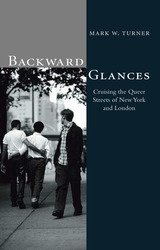
Backward Glances is the first gay urban history of its kind, examining these issues across a range of cultural material, including novels, poems, pornography, journalism, gay guides, paintings, the internet, and fragments of writing about the city such as Whitman's notebooks and David Hockney's graffiti. It provides a new way of understanding what it means for a man to walk the streets of the modern Western city.
Backward Glances is aimed at all those interested in the culture of the city, queer cultural history and the appropriation of public space.

From the iconic European badger and its North American kin to the African honey badger and Southeast Asian hog badger, Justice considers the badger’s evolution and widespread distribution alongside its current, often-imperiled status throughout the world. He travels from natural history and life in the wild to the folklore, legends, and spiritual beliefs that badgers continue to inspire, while also exploring their representation and exploitation in industry, religion, and the arts. Tracing the complex and contradictory ways in which this fascinating animal endures, Badger will appeal to anyone interested in a deeper understanding of these much-maligned creatures.

In the two decades between its debut performance and the death of impresario Sergei Diaghilev in 1929, the Ballets Russes was an unrivalled sensation in Paris and around the world. But while scholarly attention has often centered on the links between Diaghilev’s troupe and modernist art and music, there has been surprisingly little analysis of the Ballets’ role in the area of tastemaking and trendsetting. Ballets Russes Style addresses this gap, revealing the extent of the ensemble’s influence in arenas of high style—including fashion, interior design, advertising, and the decorative arts.
In Ballets Russes Style, Mary E. Davis explores how the Ballets Russes performances were a laboratory for ambitious cultural experiments, often grounded in the aesthetic confrontation of Russian artists who traveled with the troupe from St. Petersburg—Bakst, Benois, and Stravinsky among them—and the Parisian avant-garde, including Picasso, Matisse, Derain, Satie, Debussy, and Ravel. She focuses on how the ensemble brought the stage and everyday life into direct contact, most noticeably in the world of fashion. The Ballets Russes and its audience played a key role in defining Paris style, which would echo in fashions throughout the century.
Beautifully illustrated, and drawing on unpublished images and memorabilia, this book illuminates the ways in which the troupe’s innovations in dance, music, and design mirrored and invigorated contemporary culture.
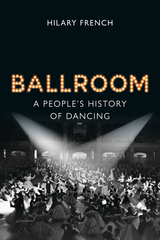
In the early twentieth century, American ragtime and the Parisian Tango fueled a dancing craze in Britain. Public ballrooms—which had never been seen before—were built throughout the country, providing a glamorous setting for all classes to dance. The new styles of dance being defined and taught in the 1920s, as well as the films of Fred Astaire and Ginger Rogers in the 1930s, ensured that ballroom dancing continued to be the most popular pastime until the 1960s, rivaled only by the cinema.
This book explores the vibrant history of Ballroom and Latin: the dances, the lavish venues, competitions, and influential instructors. It also traces the decline of competitive dancing and its resurgence in recent years with the hugely popular TV shows Strictly Come Dancing and Dancing with the Stars.

Estonia, Latvia, and Lithuania are often grouped together as the Baltic States, but these three Eastern European countries, tied together historically, are quite different. Although each is struggling to find its place within Europe and fighting to preserve its own identity, the idea of the Baltic States is a façade. In this book, Aldis Purs dispels the myth of a single, coherent Baltic identity, presenting a radical new view of the region.
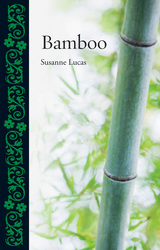
We may think of bamboo only as a snack for cuddly panda bears, but we use the plant as food, clothing, paper, fabric, and shelter. Drawing on a vast array of sources, this book builds a complete picture of bamboo in both history and our modern world. Susanne Lucas shows how bamboo has always met the physical and spiritual requirements of humanity while at the same time being exploited by people everywhere.
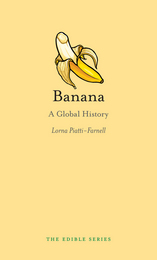
Beginning with the banana’s origins in New Guinea, Lorna Piatti-Farnell follows its pathways to South East Asia, Africa, the Caribbean, and the Americas, binding together a millennium of history into one digestible bunch. Focusing especially on the banana’s recent past, she shows how it rose from a regional staple to a global commodity, on par with coffee and sugar. She examines the ways it has been advertised, sold, and incorporated into popular culture, moving from nineteenth-century medical manuals to cookbooks, songs, slapstick comedy, and problematic figures like Miss Chiquita. Wide-ranging but pocket-sized, Banana is a culinary and cultural account of a peculiar little fruit that is at once the icon of exoticism and one of the most familiar foods we eat.

“Ours is music with built-in hatred,” said Pete Townshend. A Band with Built-In Hate pictures the Who from their inception as the Detours in the mid-sixties to the late-seventies, post-Quadrophenia. It is a story of ambition and anger, glamor and grime, viewed through the prism of pop art and the radical leveling of high and low culture that it brought about—a drama that was aggressively performed by the band. Peter Stanfield lays down a path through the British pop revolution, its attitude, and style, as it was uniquely embodied by the Who: first, under the mentorship of arch-mod Peter Meaden, as they learned their trade in the pubs and halls of suburban London; and then with Kit Lambert and Chris Stamp, two aspiring filmmakers, at the very center of things in Soho. Guided by contemporary commentators—among them, George Melly, Lawrence Alloway, and most conspicuously Nik Cohn—Stanfield describes a band driven by belligerence and delves into what happened when Townshend, Daltrey, Moon, and Entwistle moved from back-room stages to international arenas, from explosive 45s to expansive concept albums. Above all, he tells of how the Who confronted their lost youth as it was echoed in punk.

The author explains how the charms of Bangkok and its people outweigh the disadvantages of pollution, traffic and stifling heat. He also introduces celebrities, such as the early kings of Thailand’s present dynasty and Anna Leonowens, heroine of The King and I, as well as Jim Thompson, the US-born silk entrepreneur and art collector who mysteriously vanished in the jungles of Malaysia.
Bangkok provides a much needed history of the city, but is also imbued with the warmth of Warren’s love affair with its frenetic way of life.
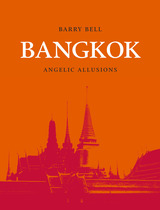
Bangkok: Angelic Allusions uses the tangible artifacts of the city, its topography, streets and monuments, as vehicles for speculating on Bangkok and its central mythologies. Significant in themselves, these physical objects or categories also bring structure to other more perceptual observations and speculations. Ultimately the book links the city’s hectic urban sensibility to its more elusive and mysterious character, the dream of Bangkok which lurks within its physical reality.
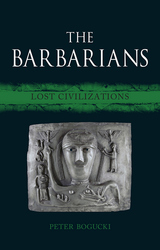
We often think of the civilizations of ancient Greece and Rome as discrete incubators of Western culture, places where ideas about everything from government to art to philosophy were free to develop and then be distributed outward into the wider Mediterranean world. But as Peter Bogucki reminds us in this book, Greece and Rome did not develop in isolation. All around them were rural communities who had remarkably different cultures, ones few of us know anything about. Telling the stories of these nearly forgotten people, he offers a long-overdue enrichment of how we think about classical antiquity.
As Bogucki shows, the lands to the north of the Greek and Roman peninsulas were inhabited by non-literate communities that stretched across river valleys, mountains, plains, and shorelines from the Atlantic Ocean in the west to the Ural Mountains in the east. What we know about them is almost exclusively through archeological finds of settlements, offerings, monuments, and burials—but these remnants paint a portrait that is just as compelling as that of the great literate, urban civilizations of this time. Bogucki sketches the development of these groups’ cultures from the Stone Age through the collapse of the Roman Empire in the west, highlighting the increasing complexity of their societal structures, their technological accomplishments, and their distinct cultural practices. He shows that we are still learning much about them, as he examines new historical and archeological discoveries as well as the ways our knowledge about these groups has led to a vibrant tourist industry and even influenced politics. The result is a fascinating account of several nearly vanished cultures and the modern methods that have allowed us to rescue them from historical oblivion.

Traveling to New Zealand for the Maori’s hangi, Hawaii for kalua pig, Mexico for barbacoa de cabeza, and Spain for a taste of bull roast, Barbecue looks at the incredible variety of the food around the world. Deutsch and Elias also discuss barbecue’s status as a masculine activity, the evolution of cooking techniques and barbecuing equipment technology, and the growth of competitive barbecuing in the United States. Rounding out the book are mouthwatering recipes, including an 1877 Minneapolis recipe for a whole roast sheep, a 1942 pork spare ribs recipe from the Ozarks, and instructions for tandoori lamb chops and Chinese roast duck. A celebration of all things smoky, meaty, and delicious, Barbecue makes the perfect gift for backyard grillers and professional roasters.
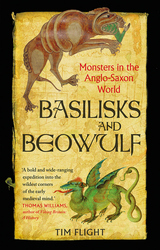
This book addresses a simple question: why were the Anglo-Saxons obsessed with monsters, many of which did not exist? Drawing on literature and art, theology, and a wealth of firsthand evidence, Basilisks and Beowulf reveals a people huddled at the edge of the known map, using the fantastic and the grotesque as a way of understanding the world around them and their place within it. For the Anglo-Saxons, monsters helped to distinguish the sacred and the profane; they carried God’s message to mankind, exposing His divine hand in creation itself. At the same time, monsters were agents of disorder, seeking to kill people, conquer their lands, and even challenge what it meant to be human. Learning about where monsters lived and how they behaved allowed the Anglo-Saxons to situate themselves in the world, as well as to apprehend something of the divine plan. It is for these reasons that monsters were at the very center of their worldview. From map monsters to demons, dragons to Leviathan, we neglect these beasts at our peril.

In Bat, Tessa Laird challenges our preconceptions as she combines fascinating facts of bat biology with engaging portrayals of bats in mythology, literature, film, popular culture, poetry, and contemporary art. She also provides a sobering reminder of the threats bats face worldwide, from heatwaves and human harassment to wind turbines and disease. Illustrated with incredible photographs and artistic representations of bats from many different cultures and eras, this celebration of the only mammals possessing true flight will enthrall batty fans, skeptics, and converts alike.

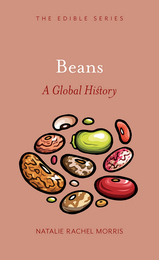

Bear draws on cultural material from around the world to examine the various legends and myths surrounding the bear, including ceremonies and taboos that govern the hunting, killing, and eating of bears. The book also looks at the role of bears in modern culture as the subjects of stories, songs, and films; as exhibited objects in circuses and zoos; and, perhaps most famously, as toys. Bieder also considers the precarious future of the bear as it is threatened by loss of habitat, poaching, global warming, and disease and discusses the impact of human behavior on bears and their environments.
Accompanied by numerous vibrant photographs and illustrations, and written in an engaging fashion, Bear is an appealing and informative volume for anyone who has curled up with Winnie-the-Pooh or marveled at this powerful king of the forest.
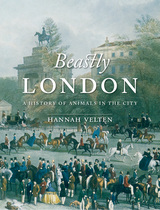
Velten travels back in history to describe a time when Londoners shared their homes with pets and livestock—along with a variety of other pests, vermin, and bedbugs; Londoners imported beasts from all corners of the globe for display in their homes, zoos, and parks; and ponies flying in hot air balloons and dancing fleas were considered entertainment. As she shows, London transformed from a city with a mainly exploitative relationship with animals to the birthplace of animal welfare societies and animal rights’ campaigns. Packed with over one hundred illustrations, Beastly London is a revealing look at how animals have been central to the city’s success.
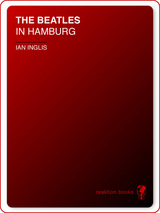
John Lennon, Paul McCartney, George Harrison, and Ringo Starr are four of the most famous names in the history of music. In the 1960s, the Beatles became the bestselling pop band in the world, inspiring legions of fans and developing into popular music icons. Fifty years later, their recordings are still in demand. But none of this happened overnight. As Ian Inglis reveals in this tale of the band’s early years, before they took the world by storm, the Beatles were little more than an inexperienced, semi-professional group of talented musicians in dire need of practice.

In a world flooded with images designed to create memories, validate perceptions, and influence others, botanical illustration is about something much more focused: creating technically accurate depictions of plants. Reproductions of centuries-old botanical illustrations frequently adorn greeting cards, pottery, and advertising, to promote heritage or generate income, yet their art is scientific: intended to record, display, and transmit scientific data. The Beauty of the Flower tells the backstory of these images, showing us how scientific botanical illustrations are collaborations among artists, scientists, and publishers. It explores the evolution and interchanges of these illustrations since the mid-fifteenth century, how they have been used to communicate scientific ideas about plants, and how views of botanical imagery change. Featuring unique images rarely seen outside of specialist literature, this book reveals the fascinating stories behind these remarkable illustrations.
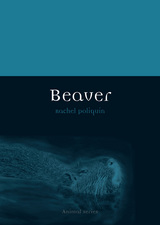
Widely hunted for their fur, beavers were a driving force behind the colonization of North America and remain, today, Canada’s national symbol. Poliquin examines depictions of beavers in Aesop’s Fables, American mythology, contemporary art, and environmental politics, and she explores the fact and fictions of beaver chain gangs, beaver-flavored ice cream, and South America’s ever-growing beaver population. And yes, she even examines the history of the sexual euphemism. Poliquin delights in the strange tales and improbable history of the beaver. Written in an accessible style for a broad readership, this beautifully illustrated book will appeal to anyone who enjoys long-forgotten animal lore and extraordinary animal biology.

From fossils to classical Greek plays to the beds of medieval travelers, history is a rash of bedbugs. So ubiquitous and so loathed are these contentious creatures, the first recorded use of the insect moniker “bug” refers to them, a word that now means any sort of glitch or invader—from computer errors to snooping devices. Lifting the covers on this pestilential history, Reinhardt shows how bedbugs were not only the center of bitter fights among scientists, but also how the bugs’ dangerous aspects were foregrounded, and how bedbugs’ peculiar mating habits fueled public revulsion. Richly illustrated, full of the latest bedbug research, and sure to make you itch, Bedbug closes with a plea for sanguine tolerance—something humans and bedbugs will need alike as worldwide infestation rates soar.
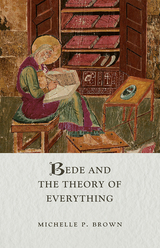
A 2023 History Today Book of the Year
This book investigates the life and world of Bede (c. 673–735), the foremost scholar of the early Middle Ages and the “father of English history.” It examines his notable feats, including calculating the first tide tables, creating the Ceolfrith Bibles and the Lindisfarne Gospels, writing the earliest extant Old English poetry, and composing his famous Ecclesiastical History of the English People. In addition to providing an accessible overview of Bede’s life and work, Michelle P. Brown describes new discoveries regarding Bede’s handwriting, his historical research, and his previously lost Old English translation of St John’s Gospel, dictated on his deathbed.
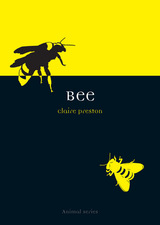
Bee traces the bee's role in art, politics, and social thought, drawing on scientific studies, literature, and historical texts. The volume examines the evolution of the bee's cultural image from a symbol of virtue and civility to the dangerous swarms of killer bees in Hollywood horror flicks. From ancient political analogies to Renaissance debates about monarchy to studies of bee behavior that portend ominous conclusions for our own socialization and use of technology, Bee analyzes the complex connections between the bee and human culture.
Written with energy and enthusiasm, Bee offers an original and fascinating meditation on this tiny workaholic.
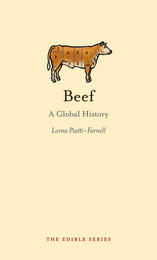
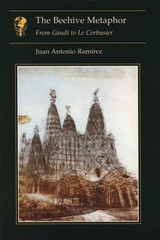
Inspired by his own father's obsession with bee-keeping – which wiped out the family's fortune – Ramírez examines the complex ideological, political and artistic repercussions of apian metaphors, thereby enhancing our understanding of the relationship between ecology, animal husbandry and architecture.

While exploring the evolution of brewing technology and how it mirrors technological changes on a wider economic scale, Smith travels from Mexico to Milwaukee, Beijing, Bruges, and beyond to give a legion of beer brands their due. He then delves into the growth of beer-drinking culture and food-beer pairings and provides information on beer-related museums, festivals, publications, and websites. He also provides a selection of recipes that will be enhanced with the downing of a glass or two of the amber nectar. Containing a wealth of detail in its concise, wonderfully illustrated pages, Beer will appeal to connoisseurs and casual fans alike.
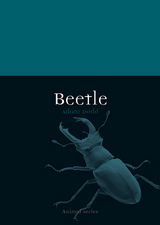
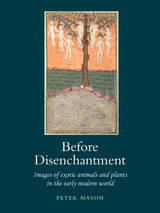
Imagine barnacle geese—creatures that begin life as leaves on a tree growing above water, but turn into small birds as soon as they fall in. Or the Lamb of Tartary that gestates inside a large gourd-like fruit. These are just some of the animal and plant hybrids imagined by early modern explorers and artists to describe unfamiliar flora and fauna.
In Before Disenchantment, Peter Mason explores how naturalists grappled with the problem of representing exotic plants and animals, turning an analytic eye on the sketches of German adventurer Caspar Schmalkalden, the skilled artistic renderings of Peter Paul Rubens, the observations of Dutch beachcomber Adriaen Coenen, and the antiquarian pursuits of Nicola Fabri de Peiresc, among others.
Featuring one hundred illustrations of these unusual and captivating creatures—from camel-sheep to races of monopods and red-haired dwarves—Before Disenchantment goes beyond orthodox histories of scientific illustration and champions a sense of wonder often lost in the modern world.
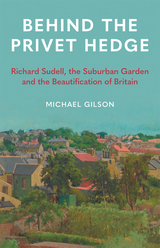
It is said that Britain is a nation of gardeners and its suburban gardens with roses and privet hedges are widely admired and copied across the world. But how and why did millions across the United Kingdom develop an obsession with colorful plots of land to begin with? Behind the Privet Hedge seeks to answer this question and reveals how, despite their stereotype as symbols of dull middle-class conformity, these open spaces were once seen as a tool to bring about social change in the early twentieth century. The book restores to the story a remarkable but long-forgotten figure, Richard Sudell, who spent a lifetime evangelizing for gardens as the vanguard of a more egalitarian society.

Recounting the lively history of the city, Jaivin discovers the Peking Man and the capital’s many legendary incarnations, such as the Cambaluc that Marco Polo wrote about in awe. She reveals it to be full of charismatic personalities and dramatic events, a place that has produced some of China’s most iconic works of literature, theater, and music. She also offers thought-provoking essays on contemporary topics ranging from the elemental problems of air and water to the vibrant art scene and the architectural adventurism of the city’s “hyperbuildings.” Generously illustrated, this guide provides helpful maps and suggested itineraries as well as practical recommendations for hotels, restaurants, museums, and other sites.
Taking readers to lakeshores, down into the subway, and around the bustling art districts, Beijing is the ultimate introduction to this extraordinary city for travelers and armchair explorers alike.
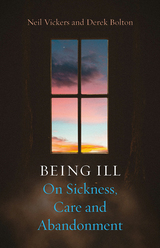
A serious illness often changes the way others see us. Few, if any, relationships remain the same. The sick become more dependent on partners and family members, while more distant contacts become strained. The carers of the ill are also often isolated. This book focuses on our sense of self when ill and how infirmity plays out in our relationships with others. Neil Vickers and Derek Bolton offer an original perspective, drawing on neuroscience, psychology, and psychoanalysis as well as memoirs of the ill or their carers to reveal how a sense of connectedness and group belonging can not only improve care but also make societies more resilient to illness. This is an essential book on the experience of major illness.

All Benjamin Franklin biographers face a major challenge: they must compete with their subject. In one of the greatest autobiographies in world literature, Franklin has already told his own story, and subsequent biographers have often taken Franklin at his word. In this exciting new account, Kevin J. Hayes takes a different approach.
Hayes begins when Franklin is eighteen and stranded in London, describing how the collection of curiosities he viewed there fundamentally shaped Franklin’s intellectual and personal outlook. Subsequent chapters take in Franklin’s career as a printer, his scientific activities, his role as a colonial agent, his participation in the American Revolution, his service as a diplomat, and his participation in the Constitutional Convention. Containing much new information about Franklin’s life and achievements, Hayes’s critical biography situates Franklin within his literary and cultural milieu.

Pearson describes the rise of Berlin from a small settlement surrounded by bog to one of the crucial economic and political centers of Europe. Berlin is a palimpsest of a cutting edge and dynamic modern culture over a troubled history, one that is visible in bombsites, museums, late-night clubs, and even a lake that allegedly hosts a man-eating monster. He ultimately shows how the city is imbued with an array of unnerving elements: emptiness, provincialism, ramshackle industrial eclecticism, lurid and lascivious counter-cultural expressions, and a tremendous history of violence—but also that these are precisely the sorts of things that give the city its unique charge. Posing one thought-provoking question after another, Pearson walks the city’s neighborhoods, peeling back layer upon layer of history in order to reveal a Berlin that few of us know.
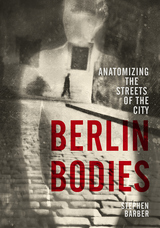
Spanning the twentieth century and moving up to today, Barber’s book offers a unique account of Berlin’s development. He explores previously neglected material from the city’s audio and visual archives to examine how people interacted with the city’s streets, buildings, squares, and public spaces. He recounts a history of riots, ruins, nightclubs, crowds, architectural experiments, citywide spectacles, film, art, and performances, showing how these human forces have affected the structure of the city. Through this innovative approach, Barber offers a new way to think about modern urban spaces as corporeal spaces, and how people exert a cumulative effect on cities over time.


In Berries, Heather Arndt Anderson uncovers the offbeat stories of how humans came to love these tiny, bewildering fruits. Readers meet the inventor of thornless brambles; learn ancient fables and berry-lore; discover berries’ uses in both poisonous witches’ brews and modern superfood health crazes. Featuring a selection of historic and original recipes for berry lovers to try, this is a witty and lushly illustrated ramble through the curious history of our favorite fruits, from interlopers like strawberries (not true berries) to the real deal: tomatoes.
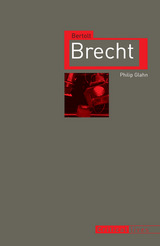
Glahn reveals how Brecht upended the language and gestures of philosophers, beggars, bureaucrats, thieves, priests, and workers, using them as weapons in his work. Following Brecht through the Weimar Republic, Nazism, exile, and East German Socialism, Glahn argues that the writer’s own life became a production of history that illuminates an ongoing crisis of modern experience shaped by capitalism, nationalism, and visions of social utopia. Sharp, accessible, and full of pleasures, this concise biography will interest anyone who wishes to know about this pivotal modern dramatist.
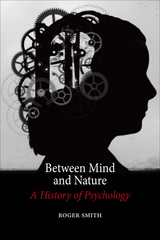

Surveying the many traditions that make up German food today, Heinzelmann shows that regional variations of the country’s food have not only been marked by geographic and climatic differences between north and south, but also by Germany’s political, cultural, and socioeconomic history. She explores the nineteenth century’s back-to-the-land movement, which called for people to grow food on their own land for themselves and others, as well as the development of modern mass-market products, rationing and shortages under the Nazis, postwar hunger, and divisions between the East and West. Throughout, she illustrates how Germans have been receptive to influences from the countries around them and frequently reinvented their cuisine, developing a food culture with remarkable flexibility.
Telling the story of beer, stollen, rye bread, lebkuchen, and other German favorites, the recipe-packed Beyond Bratwurst will find a place on the shelves of food historians, chefs, and spätzle lovers alike.
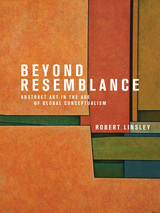
Linsley shows how abstraction is a response to the world we live in, one that deliberately avoids moralizing, explanation, or overt polemic. He champions the work of lesser-known but important artists from India, China, and Latin and Central America, such as Vasudeo S. Gaitonde, Ding Yi and Gunther Gerzso as well as the more familiar names from history, such as Lucio Fontana, Frank Stella and Gerhard Richter, treating their work with equal seriousness. He also looks toward abstract art’s future, showing that it still has plenty of life and purpose as a genre that helps us find a clear space to make sense of the times we live in. Ultimately, Linsley demonstrates the unique, rich, and full experience that abstract art can give us. Richly illustrated, this book is a must-read for art historians and art lovers.
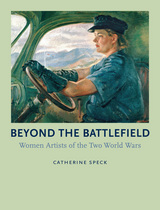
In addition to following high-profile artists such as American photographer Lee Miller, Speck recounts the experiences of nurses, voluntary aides, and ambulance drivers who found the time to create astonishing artworks in the midst of war zones. She also describes the feelings of disempowerment revealed in the work done by women distant from the conflict. As Speck shows, women artists created highly charged emotional responses to the threats, sufferings, and horrors of war—the constant fear of attack, the sorrow of innocent lives destroyed, the mass murders of people in concentration camps, and the unimaginable aftermath of the atomic bombs. The first book to explore female creativity during these periods, Beyond the Battlefield delivers an insightful and meditative examination of this art that will appeal to readers of art history, war history, and cultural studies.

Pavel Florensky was a true polymath: trained in mathematics and philosophy at Moscow University, he rejected a scholarship in advanced mathematics in order to study theology at the Moscow Theological Academy. He was also an expert linguist, scientist and art historian. A victim of the Soviet government’s animosity towards religion, he was condemned to a Siberian labor camp in 1933 where he continued his work under increasingly difficult circumstances. He was executed in 1937.
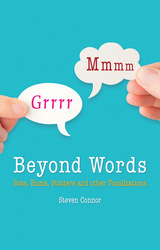
Beyond Words goes outside of linguistics and phonetics to focus on the popular conceptions of what language is, rather than what it actually is or how it works. From the moans and sobs of human grief to playful linguistic nonsense, Connor probes the fringes and limits of human language—and our definition of “voice” and meaning—to challenge our basic assumptions about what it is to communicate and where we find meaning in language. By engaging with vocal sounds and tics usually trivialized or ignored, Beyond Words presents a startling and fascinating new way to engage with language itself.

For thousands of years, birches have given the people of northern temperate forests and beyond raw materials in the form of leaves, twigs, branches, bark, wood, and sap—materials used not simply to survive, but to flourish and express identity in practical and spiritual ways. Tough, waterproof, and flexible, birch bark has been used for everything from basketry and clothing to housing, transport, musical instruments, and medicines, and even to communicate and record sacred beliefs: some of our most ancient Buddhist texts and other historic documents are written on birch bark. Birches have not only shaped regional indigenous cultures—for example, in the form of the Native American wigwam and the birch bark canoe—they also continue to be of global economic importance today. Featuring an arbor of illustrations and rich analyses, Birch is an enlightening look into the history and possible future of these beautiful trees.

In Biscuits and Cookies, Anastasia Edwards explores the delectable past of these versatile snacks, from their earliest beginnings through Middle Eastern baking techniques, to cookies of Northern Europe in the Middle Ages, and on into the New World. From German lebkuchen to the animal cracker (more than half a billion of which are produced each year in the United States alone), from brownies and sugar cookies in the United States to shortbread and buttery tea biscuits in the United Kingdom, to Anzac and Girl-Guide biscuits in New Zealand and Australia, this book is crammed with biscuit and cookie facts, stories, images, and recipes from around the world and across time. And there’s no need to steal from the cookie jar.
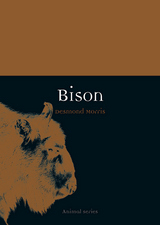
Exploring the bison’s evolution and habitat, Morris paints a nuanced portrait of this iconic animal, exploring the different sides of its personality. He shows that, while generally seen as gentle and calm, bison in fact are very unpredictable, liable to attack at any moment. Comparing and contrasting the two remaining species—the European wisent and the American bison—he goes on to tell the heartbreaking story of their near-extinction, how we hunted them down from innumerable numbers to less than a thousand, with such little regard that it was a common practice for train travelers to shoot them from their passing cars. He also tells the story of our more recent efforts—and successes—at bringing them back to such a point that their domestically raised meat has now become a popular alternative to beef. Throughout, Morris balances this natural history with a cultural one, the lore of the bison and the spirit of the west, dotting his text with vibrant images of the bison from nature, art, and popular culture. The result is an absorbing history of one of the most majestic creatures to walk the plains of the earth.

In 1912 the young Frédéric-Louis Sauser arrived in France, carrying an experimental poem and a new identity. Blaise Cendrars was born. Over the next half-century, Cendrars wrote innovative poems, novels, essays, film scripts, and autobiographical prose. His groundbreaking books and collaborations with artists such as Sonia Delaunay and Fernand Léger remain astonishingly modern today. Cendrars’s writings reflect his insatiable curiosity, his vast knowledge, which was largely self-taught, and his love of everyday life.
In this new account, Eric Robertson examines Cendrars’s work against a turbulent historical background and reassesses his contribution to twentieth-century literature. Robertson shows how Cendrars is as relevant today as ever and deserves a wider readership in the English-speaking world.

Caws takes us back to Pascal’s youth, when he was a child prodigy first engaging mathematics through the works of mathematicians such as Father Mersenne. She describes his early scientific experiments and his construction of mechanical calculating machines; she looks at his correspondence with important thinkers such as René Descartes and Pierre de Fermat; she surveys his many inventions, such as the first means of public transportation in Paris; and she considers his later religious exaltations in works such as the “Memorial.” Along the way, Caws examines Pascal’s various modes of writing—whether he is arguing with the strict puritanical modes of church politics, assuming the personality of a naïve provincial trying to understand the Jesuitical approach, offering pithy aphorisms in the Pensées, or meditating on thinking about thinking itself.
Altogether, this book lays side by side many aspects of Pascal’s life and work that are seldom found in a single volume: his religious motivations and faith, his scientific passions, and his practical savvy. The result is a comprehensive but easily approachable account of a fascinating and influential figure.
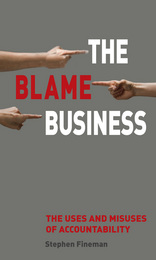
Fineman focuses on blame’s roots and enduring manifestations, from the witch hunts of the past to today’s more buttoned-up scapegoating and stigmatization; from an individual’s righteous anger to entire cultures shaped by its power. Addressing our era of increasing unease about governance in public and private enterprises, he delves behind the scenes of organizations infected with blame, profiling the people who keep its plates spinning. With a critical eye, he examines the vexing issue of public accountability and the political circus that so often characterizes our politicians and corporations lost in their “blame games.”
Ultimately, Fineman raises the challenging question of how we might mitigate blame’s corrosive effects, asking crucial and timely questions about the limits of remorse and forgiveness, the role of state apologies for historical wrongdoings, whether restorative justice can work, and many other topics. An absorbing look at something we all know intimately, this book deepens our understanding of blame and how it shapes our lives.

Blood Rush shows how, throughout history, blood has had the capacity to intoxicate us, to the point that we lose ourselves, whether in violence, through hunting, fighting, or killing, or in the vicarious thrill of watching sporting events, horror films, or video games. Are these feelings physical, or in our imagination? Where does the magic of blood come from? In his deeply researched and provocative narrative, Verplaetse moves from antiquity to the present, from magic to experimental psychology, from philosophy to religion and scientific discoveries, to demonstrate why blood at once attracts and repels us.
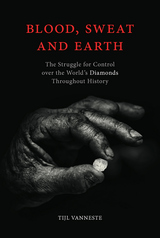
Blood, Sweat and Earth is a hard-hitting historical exposé of the diamond industry, focusing on the exploitation of workers and the environment, the monopolization of uncut diamonds, and how little this has changed over time. It describes the use of forced labor and political oppression by Indian sultans, Portuguese colonizers in Brazil, and Western industrialists in many parts of Africa—as well as the hoarding of diamonds to maintain high prices, from the English East India Company to De Beers. While recent discoveries of diamond deposits in Siberia, Canada, and Australia have brought an end to monopolization, the book shows that advances in the production of synthetic diamonds have not yet been able to eradicate the exploitation caused by the world’s unquenchable thirst for sparkle.
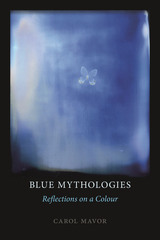
The blues of Blue Mythologies include those present in the world’s religions, eggs, science, slavery, gender, sex, art, the literary past, and contemporary film. Carol Mavor’s engaging and elegiac readings in this beautifully illustrated book take the reader from the blue of a newborn baby’s eyes to Giotto’s frescoes at Padua, and from the films of Derek Jarman and Krzysztof Kiéslowski to the islands of Venice and Aran.
In each example Mavor unpicks meaning both above and below the surface of culture. In an echo of Roland Barthes’s essays in Mythologies, blue is unleashed as our most familiar and most paradoxical color. At once historical, sociological, literary, and visual, Blue Mythologies gives us a fresh and contemplative look into the traditions, tales, and connotations of those somethings blue.
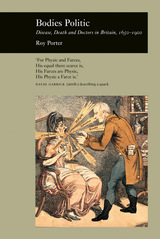
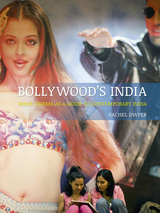
Showing how escapism and entertainment function in Bollywood cinema, Rachel Dwyer argues that Hindi cinema’s interpretations of India over the last two decades are a reliable guide to understanding the nation’s changing hopes and dreams. She looks at the ways Bollywood has imagined and portrayed the unity and diversity of the country—what it believes and feels, as well as life at home and in public. Using Dwyer’s two decades spent working with filmmakers and discussing movies with critics and moviegoers,Bollywood’s India is an illuminating look at Hindi cinema.
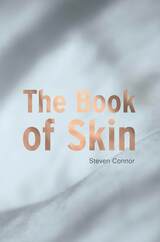
The Book of Skin then probes into how skin has been such a powerfully symbolic terrain in photography, religious iconography, cinema, and literature. From the Turin shroud to Ralph Ellison’s Invisible Man to plastic surgery, The Book of Skin expertly examines the role of skin in Western culture. A compelling read that penetrates well beyond skin-deep, The Book of Skin validates James Joyce’s declaration that “modern man has an epidermis rather than a soul.”

When we look at trees, we see a form of natural architecture, and yet we have seemingly always exploited trees to make new buildings of our own. Whereas a tree creates its own structure, humans generally destroy other things to build, with increasingly disastrous consequences. In Botanical Architecture, Paul Dobraszczyk looks closely at how elements of plants—seeds, roots, trunks, branches, leaves, flowers, and canopies—compare with and constitute human-made buildings.
Given the omnipresence of plant life in and around our structures, Dobraszczyk argues that we ought to build as much for plants as for ourselves, understanding that our lives are always totally dependent on theirs. Botanical Architecture offers a provocative and original take on the relationship between ecology and architecture.
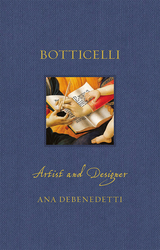
In this vivid account, Ana Debenedetti reexamines the life and work of Renaissance artist Sandro Botticelli through a novel lens: his business acumen. Focusing on the organization of Botticelli’s workshop and the commercial strategies he devised to make his way in Florence’s very competitive art market, Debenedetti looks with fresh eyes at the remarkable career and output of this pivotal artist within the wider context of Florentine society and culture. Uniquely, Debenedetti evaluates Botticelli’s celebrated works, like The Birth of Venus, alongside less familiar forms such as tapestry and embroidery, showing the breadth of the artist’s oeuvre and his talent as a designer across media.
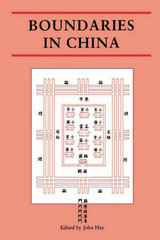
All the authors in this book are established Sinologists. Boundaries in China will be stimulating reading for anyone interested in the psycho-social dynamics of non-Western art and culture.
Includes essays by Robin D. S. Yates, Wu Hung, Pauline Yu, John Hay, Jonathan Hay, Dorothy Ko, Isabelle Duchesne, Rey Chow, Ann Anagnost.
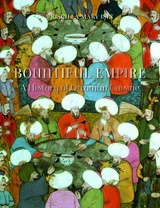
Işın begins with the essential ingredients of this fascinating history, examining the earlier culinary traditions in which Ottoman cuisine was rooted, such as those of the Central Asian Turks, Abbasids, Seljuks, and Byzantines. She goes on to explore the diverse aspects of this rich culinary culture, including etiquette, cooks, restaurants, military food, food laws, and food trade. Drawing on everything from archival documents to poetry and featuring more than one hundred delectable illustrations, this meticulously researched, beautiful volume offers fresh and lively insight into an empire and cuisine that until recent decades have been too narrowly viewed through orientalist spectacles.
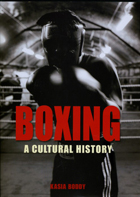

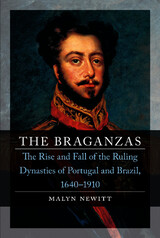
In his fascinating reappraisal of the Braganza dynasty, Malyn Newitt traces the rise and fall of one of the world’s most important royal families. He introduces us to a colorful cast of innovators, revolutionaries, villains, heroes, and charlatans, from the absolutist Dom Miguel to the “Soldier King” Dom Pedro I, and recounts in vivid detail the major social, economic, and political events that defined their rule. Featuring an extensive selection of artworks and photographs, Newitt’s book offers a timely look at Britain’s “oldest ally” and the role of monarchy in the early modern European world.
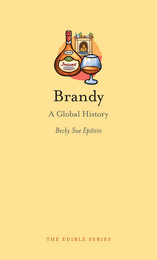
Delving into brandy’s fascinating story, Becky Sue Epstein reveals that many cultures have contributed to the history of the beverage, from the Dutch calling the drink “burnt wine” to the Spanish colonials in Peru and California who produced the first brandies in the New World. She also explores the distillation and aging processes, and she discusses the spirit’s many varieties, including the elegant, amber Cognac and the more overlooked Armagnac. In addition, Epstein offers advice on buying, storing, and serving brandy, while also providing recipes for both classic and new cocktails. Taken neat or mixed in a sidecar, Brandy is a tasty book for both connoisseurs and first-time drinkers to enjoy.

Spanning from 1945 through today, the book examines Brazilian architecture beyond the works of renowned architects such as Oscar Niemeyer and the “Carioca” architects of Rio de Janeiro. Williams investigates issues such as the use of historic architecture, the importance of leisure and luxury, the role of the favela as a backdrop and inspiration for development, and the rapid growth of cities. From the designated world heritage site of Brasilia—a capital city that was planned from the ground up—to the installation work of artists such as Hélio Oiticica, Brazil delves into the origins and far-reaching influence of Brazil’s architectural modernism.
At a moment when Latin America is of increasing importance in global business and culture, Brazilwill be an essential read for all scholars of architecture and Latin American history.




Simple, healthy, and comforting, breakfast cereals are a perennially popular way to start the day. This book examines cereal’s long, distinguished, and surprising history—dating back to when, around 10,000 years ago, the agricultural revolution led people to break their fasts with wheat, rice, and corn porridges. Only in the second half of the nineteenth century did entrepreneurs and food reformers create the breakfast cereals we recognize today: Kellogg’s Corn Flakes, Cheerios, and Quaker Oats, among others. In this entertaining, well-illustrated account, Kathryn Cornell Dolan explores the history of breakfast cereals, including many historical and modern recipes that the reader can try at home.
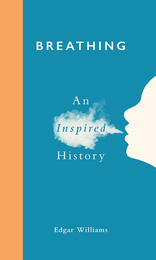


Using the work of archaeologists and paleoanthropologists, Spellman examines how interpreting physical remains gives us insight into prehistoric perspectives on death. He traces how humans have died over the centuries, both in the causes of death and in the views of actions that lead to death. He spotlights the great philosophical and scientific traditions of the West, which did not believe in an afterlife or see the purpose of bereavement, while also casting new light on the major religious beliefs that emerged in the ancient world, particularly the centuries-long development of Christianity. He delves into three approaches to the meaning of death—the negation of life, continuity in another form, and agnosticism—from both religious and secular-scientific perspectives.
Providing a deeper context for contemporary debates over end-of-life issues and the tension between longevity and quality of life, A Brief History of Death is an illuminating look at the complex ways humans face death and the dying.
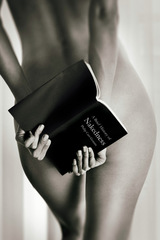
As one common story goes, Adam and Eve, the first man and woman, had no idea that there was any shame in their lack of clothes; they were perfectly confident in their birthday suits among the animals of the Garden of Eden. All was well until that day when they ate from the Tree of Knowledge of Good and Evil and went scrambling for fig leaves to cover their bodies. Since then, lucrative businesses have arisen to provide many stylish ways to cover our nakedness, for the naked human body now evokes powerful and often contradictory ideas—it thrills and revolts us, signifies innocence and sexual experience, and often marks the difference between nature and society. In A Brief History of Nakedness psychologist Philip Carr-Gomm traces our inescapable preoccupation with nudity.
Rather than studying the history of the nude in art or detailing the ways in which the naked body has been denigrated in the media, A Brief History of Nakedness reveals the ways in which religious teachers, politicians, protesters, and cultural icons have used nudity to enlighten or empower themselves as well as entertain us. Among his many examples, Carr-Gomm discusses how advertisers and the media employ images of bare skin—or even simply the word “naked”—to garner our attention, how mystics have used nudity to get closer to God, and how political protesters have discovered that baring all is one of the most effective ways to gain publicity for their cause. Carr-Gomm investigates how this use of something as natural as nakedness actually gets under our skin and evokes complicated and complex emotional responses.
From the naked sages of India to modern-day witches and Christian nudists, from Lady Godiva to Lady Gaga, A Brief History of Nakedness surveys the touching, sometimes tragic and often bizarre story of our relationships with our naked bodies.

Alan Powers gives equal weight to the technical and aesthetic aspects of modernism, as well as its often controversial reception within Britain and around the world. He examines the works of key British architects and delves into the influence of non-British architects within the United Kingdom. Powers then turns his attention to postmodern architecture as a global movement, looking at contemporary efforts to make architecture sustainable and adaptable to the new challenges of urban life.
Thoroughly illustrated with images of the buildings under discussion, advertisements, and other historical photographs, Britain is an authoritative, yet highly accessible, account of twentieth-century British architecture.
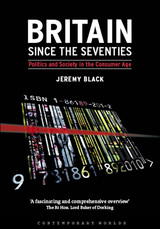
Black’s account of contemporary Britain challenges as well as entertains, seeking to engage the reader in the process of interpretation. Through the lens of the last three decades, the author unveils his image of a country in which uncertainty, contingency and change are the defining features. In charting the impact of increasing individualism, longevity and secularization, Black is drawn repeatedly to examine a fundamental paradox of modern Britain: "At the start of both century and millennium, the British were more prosperous than ever before, but . . . happiness has not risen with prosperity."
Britain since the Seventies is a wide-ranging and cogent evaluation of recent British history, and as such will appeal to all those interested in the condition of modern Britain, and how it came to be so, as well as being an ideal introduction for students of the subject.
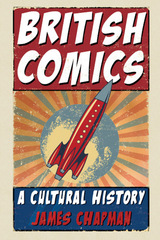
Arguing that British comics are distinct from their international counterparts, a unique showcase of the major role they have played in the imaginative lives of British youth—and some adults.
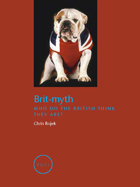
Full of thought-provoking insights and engaging anecdotes, Brit-Myth will entertain both Anglophiles and those who want to learn more about the land under the Union Jack.


Wilson offers a history of Buenos Aires’s beginnings as a Spanish colony in the sixteenth century, describing how it evolved from a port city for European trade to a booming, multicultural regional capital that became the leading destination for European immigrants. He examines the many swings between authoritarian and democratic governments the city has experienced during its history and sorts out the urban myths from the real story of the monuments, buildings, and people of Buenos Aires. The book also includes essays on present-day Buenos Aires—its parks, cemeteries, museums, and bookshops—to reveal what makes the city tick. Illustrated throughout with contemporary photos and compelling historical images, Buenos Aires provides useful references for travelers looking for restaurant, hotel, and itinerary ideas.
One of the first titles in Reaktion’s new CityScopes series, this social and urban history is an authoritative introduction and intimate guide to this vibrant, alluring city, past and present.
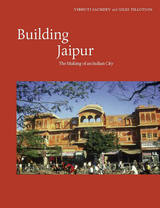
The authors also examine the place of traditional architectural theory in a modern context – Post-Modern architecture in India has often sought to recapture a spirit of the past, and yet been reluctant to engage with traditional theory. By chronicling the gradual eclipse of Indian architectural theory, the authors explain how this reluctance arose; they also describe the need and the terms for a fresh engagement with it. The result is an architectural biography of a city, and a concise history of Indian architectural theory over the last 300 years.
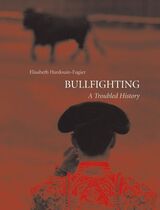
“Bullfighting is the only art in which the artist is in danger of death and in which the degree of brilliance in the performance is left to the fighter's honor,” wrote Ernest Hemingway in Death in the Afternoon. Art? Ritual? Sport? Cruelty? Though opinions are divided, one thing is certain—bullfighting sparks passionate responses. Supporters argue that bullfighting is a culturally important tradition stretching back thousands of years; while animal rights groups argue that it is cruel and barbaric, causing unnecessary suffering to both bulls and horses. In Bullfighting: A Troubled History Elisabeth Hardouin-Fugier brings clarity to this debate through an exploration of the long history of killing bulls as public spectacle.
This book is the first cross-cultural study of bullfighting, covering Europe, North America, and Latin America. Hardouin-Fugier shows how each continent has its own unique style and tools of the trade. For example, in North America, the favored technique is grabbing the bull by the horns, and in Europe the bull is run through with a sword. In the late 1700s bullfights became mass leisure activities, with paying spectators packing into arenas—the classic bullfight of popular imagination. It was at this time that the bullfight became a big business and the bullfighter became a celebrity. In this vivid and comprehensive history, Hardouin-Fugier also explores the extensive influence of the bullfight on art, literature, and culture from the paintings of Goya to the writings of Georges Bataille.
Enriched with many fascinating and sometimes disturbing illustrations, Bullfighting presents a discerning and intelligent approach to a divisive practice. Hardouin-Fugier’s informative history will enthrall anyone who has been curious about bullfighting—supporters and detractors alike.

Linking Bruno’s trial to later confrontations between the Inquisition and Galileo in 1616 and 1633, Martínez shows how some of the same Inquisitors who judged Bruno challenged Galileo. In particular, one clergyman who authored the most critical reports used by the Inquisition to condemn Galileo in 1633 immediately thereafter wrote an unpublished manuscript in which he denounced Galileo and other followers of Copernicus for their beliefs about the universe: that many worlds exist and that the Earth moves because it has a soul. Challenging the accepted history of astronomy to reveal Bruno as a true innovator whose contributions to the science predate those of Galileo, this book shows that is was cosmology, not theology, that led Bruno to his death.
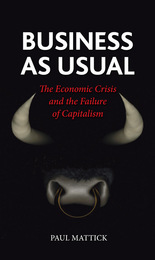
The recent global economic downturn has affected nearly everyone in every corner of the globe. Its vast reach and lingering effects have made it difficult to pinpoint its exact cause, and while some economists point to the risks inherent in the modern financial system, others blame long-term imbalances in the world economy. Into this debate steps Paul Mattick, who, in Business as Usual, explains the global economic downturn in relation to the development of the world economy since World War II, but also as a fundamental example of the cycle of crisis and recovery that has characterized capitalism since the early nineteenth century.
Mattick explains that today’s recession is not the result of a singular financial event but instead is a manifestation of long-term processes within the world economy. Mattick argues that the economic downturn can best be understood within the context of business cycles, which are unavoidable in a free-market economy. He uses this explanation as a springboard for exploring the nature of our capitalist society and its prospects for the future.
Although Business as Usual engages with many economic theories, both mainstream and left-wing, Mattick’s accessible writing opens the subject up in order for non-specialists to understand the current economic climate not as the effect of a financial crisis, but as a manifestation of a truth about the social and economic system in which we live. As a result the book is ideal for anyone who wants to gain a succinct and jargon-free understanding of recent economic events, and, just as important, the overall dynamics of the capitalist system itself.

In this book, David Ellis traces Lord Byron’s life from rented lodgings in Aberdeen and the crumbling splendors of Newstead Abbey to his final grand tour of Asia. Describing his exile from England as well as his subsequent travels in Italy and Greece, Ellis shows just how completely Byron’s experiences colored both his serious and comic writings, such as Childe Harold’s Pilgrimage and The Corsair. This is a fresh, concise, and clear-eyed account of the flamboyant poet’s life and work.
READERS
Browse our collection.
PUBLISHERS
See BiblioVault's publisher services.
STUDENT SERVICES
Files for college accessibility offices.
UChicago Accessibility Resources
home | accessibility | search | about | contact us
BiblioVault ® 2001 - 2024
The University of Chicago Press









